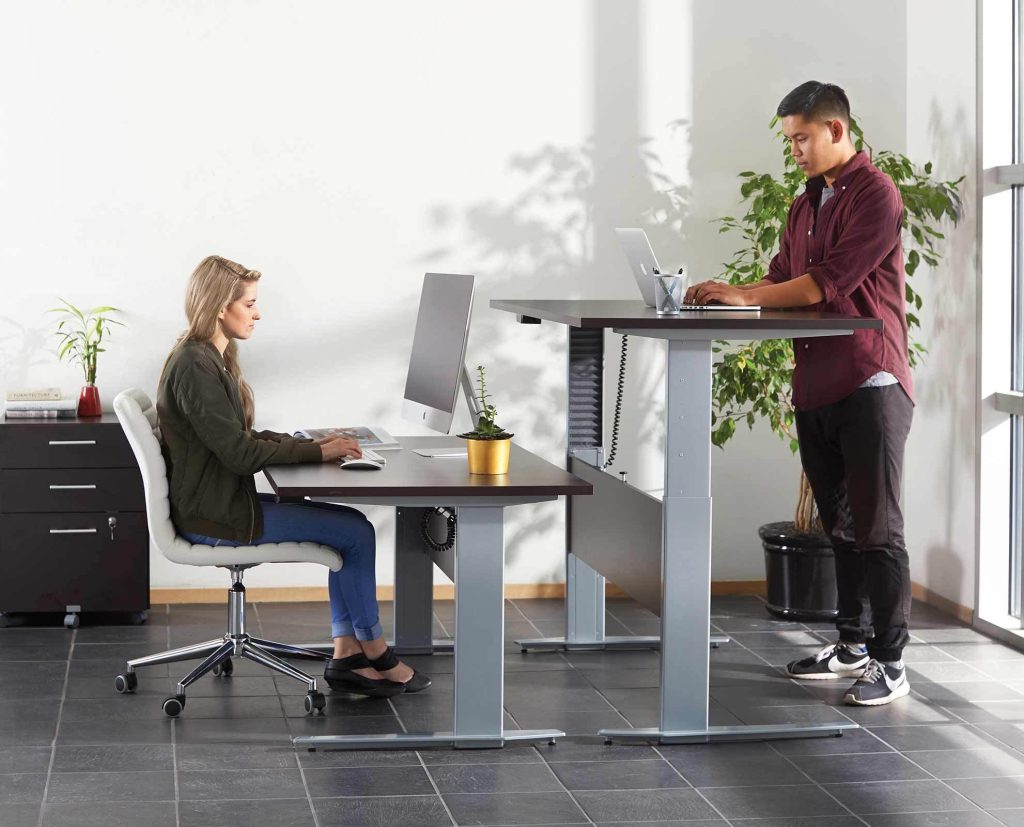Boost Your Productivity and Well-Being: Our Tips for Improving Your Work-from-Home Experience
Many people dream of working from home. It provides the flexibility to work in a comfortable environment and avoid the daily commute. However, it’s also challenging to balance work and life under the same roof, leading to burnout, decreased productivity, and a lack of motivation.

For these past few years, many of us have had to adjust to this new way of working, and it hasn’t always been easy. But don’t worry, I’m here to help with some useful tips for improving your work-from-home experience and optimising your well-being. So, let’s dive in and get you on the path to a more fulfilling work-life balance!
Get a Sit Stand Desk
Constantly sitting in one position can put a lot of strain on your back, leading to discomfort and even pain and injury over time. When you sit at a desk, your back muscles have to work harder to keep your spine upright and stable. This often causes fatigue and tension in your muscles, leading to stiffness and pain. Additionally, sitting for long periods can cause compression of the discs in your spine, which can lead to herniated discs or other injuries.

So, to prevent back pain and other issues that arise from sitting for long periods, pick the best sit stand desk for your home office! These desks allow you to easily switch between sitting and standing positions, promoting better posture, improved circulation, and increased energy and productivity. This way you can alleviate the strain on your muscles and reduce the risk of developing stiffness, tension, or other discomforts.
In addition to promoting better physical health, a sit stand work desk can also improve your mental well-being by increasing your energy and focus. Standing helps to boost circulation and oxygen flow to the brain, leading to improved cognitive function and productivity.
What Makes a Good Sit Stand Desk?
There are many different types available, ranging from simple desktop risers to full-standing desks with adjustable heights. Some models even come with built-in features like cable management systems, keyboard trays, and ergonomic design elements to promote better posture and comfort. To choose the best sit stand desk here are a few things to consider:
- Height adjustability: Look for a design that allows you to smoothly and quickly transition between sitting and standing positions, with a range of height options to suit your needs;
- Stability: A model that’s wobbly or unstable can not only be frustrating but also dangerous. Make sure the desk you choose is sturdy and supports the weight of your equipment and any additional items you have on it;
- Size and shape: Consider the size and shape of your sit and stand computer desk as well as the amount of space you have available in your workspace. Make sure it’s large enough to accommodate your equipment and any extra items you need, but not so large that it takes up too much space in your home office.
Plan Your Day
It’s difficult to stay focused and productive when you’re surrounded by distractions and temptations to procrastinate. One effective way to improve your work is by planning your day ahead of time. When you do this, you give yourself a clear sense of direction and purpose. You can set specific goals and priorities for what you want to accomplish and create a roadmap for how to get there. This will help you avoid feeling overwhelmed or aimless, and give you a greater sense of control over your workload.
Here are a few tips for planning your day when working from home:
- Create a to-do list: Make a list of all the tasks you need to complete and prioritise them based on importance and deadline. Having a clear list of what you need to accomplish helps you stay on track and avoid getting side-tracked by less important tasks;
- Schedule your time: Once you have your to-do list, schedule your time accordingly. Decide when you will work on each task and block out specific periods of time on your calendar;
- Take breaks: Make sure to schedule breaks throughout the day to rest and recharge. Taking short breaks increases your productivity and helps you stay focused in the long run.
Separate Work from Fun
Working from home can be a double-edged sword. On one hand, you have the freedom to work in your pyjamas and take breaks whenever you want. On the other hand, it’s hard to separate your work life from your personal life, which often leads to burnout and decreased productivity. One effective way to change this is by trying to separate work from fun.

Firstly, designate a specific area in your home as your workspace, and only use it for work-related activities. This will help you mentally separate work from the rest of your life and create a clear boundary between the two. Setting up a designated area with the best sit stand desk is one way of making it work.
I also suggest that you set clear boundaries with your friends and family members and let them know when you’re working and when you’re available for socialising. This way, you’ll avoid distractions and stay focused on your work.
Socialise with Your Co-Workers
When you work from home, it’s easy to feel isolated and disconnected from your colleagues and the whole world. So, while technology has made it easier to stay connected virtually, you should still find ways to spend time with your co-workers.
Socialising with them can have many benefits. It helps you build stronger relationships, which leads to better communication and collaboration. It also helps you stay motivated and engaged in your work and reduces feelings of isolation and loneliness.







